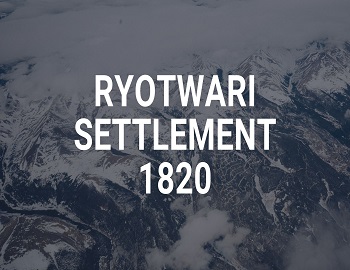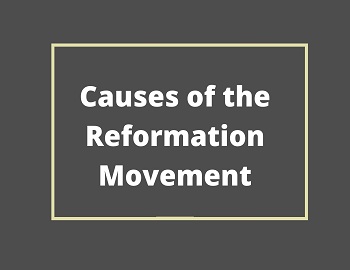Ryotwari Settlement 1820:
- Ryotwari Settlement was first introduced in Tamil Nadu (former Madras) by Thomas Munro and Captain Read in 1820; and then it was gradually extended to Maharashtra (former Bombay Presidency), East Bengal and portions of Assam and Coorg (part of present Karnataka).
- Ryotwari Settlement was implemented in 52 per cent of British India.
- 50 per cent of the net produce was fixed as land revenue.
- Under the Ryotwari system, the cultivators were recognized as the owner of their land. Each field was to be surveyed, its output estimated and then converted into cash. Each field was registered in the name of a ‘raiyat‘, sometimes referred to as the ‘pattadar‘. who was directly responsible for payment of the revenue to the government. Thus, the raiyats were often made jointly responsible for payment of the revenue and were allowed to allocate the individual payments themselves.
- The Settlement was not permanent but for a fixed tenure, normally for 30 years; therefore in case of increased production, the government could also increase the land revenue unlike in Permanent Settlement.
- The primary aims of the Ryotwari Settlement were the regular collection of revenue and amelioration of the conditions of the ryots. The first aim was realized but the second remained unfulfilled. Since the settlements of the land revenue in money were fixed for several years, the prolonged fall in prices increased the real burden of the land revenue on the peasant on a particular plot. As there was no fixity of rental, no security against enhancement of rent and no adequate motive for spending money and labour for the improvement of cultivation, the value of agricultural output shrank.
- One great defect of the system was that the cultivator had no voice in the settlement; he was simply called to pay the tax or to quit his land. ‘Under such a system, where the cultivators were not consulted and could appeal to no Land Courts, the revenue demand was increased at each recurring settlement, and the peasantry remained resourceless and poor’.
- In retrospect, both the Permanent Settlement and the Ryotwari Settlement departed fundamentally from the traditional land system of the country. They created a new form of private property in land in such a way that the benefit of the innovation did not reach the cultivators. The land was made a commodity liable to be transferred, sold, mortgageable and alienable. This was done primarily to protect the Government’s revenue. If the land had not been made transferrable or saleable, the Government would have found it very difficult to realize revenue from a cultivator who had no savings or possessions out of which to pay it.
- Another reason for introducing private ownership in the land was provided by the belief that only the right of ownership would make the landlord or the ryot exert himself in making improvements.
- The British by making land a commodity that could be freely bought and sold introduced a fundamental change in the existing land systems of the country. The stability and the continuity of the Indian villages were shaken. In fact, the entire structure of the rural society began to break up.









Comments (No)